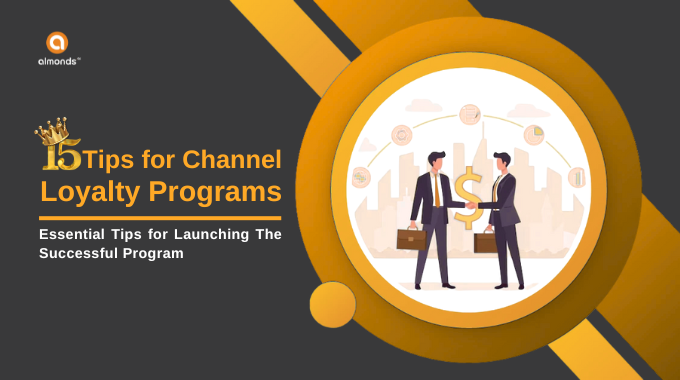In the competitive B2B landscape, loyalty rewards programs have become an essential tool for businesses to retain channel partners and foster long-term relationships. However, when it comes to designing a great loyalty program, a crucial decision lies in choosing between tiered and flat programs.
In this blog, we will delve into the debate of tiered versus flat loyalty rewards programs, exploring the advantages and drawbacks of each approach. By the end, you’ll have a better understanding of which loyalty program structure suits your business objectives.
Tiered Programs: Elevating Channel Partner Loyalty
It is also known as a multi-tier or VIP program. It is structured in levels or tiers based on engagement and sales performance. Each tier offers increasing benefits and rewards, incentivizing them to progress to higher levels. These programs are designed to recognize and reward loyal channel partners while encouraging others to continue engaging with the brand.
Advantages of Tiered Programs:
- Increased Channel Partner Engagement
These programs provide channel partners with a sense of achievement as they progress through the levels, motivating them to make repeat purchases and increase their engagement with the brand. - Exclusive Benefits
Each tier typically offers unique benefits, such as personalized offers, early access to new products, dedicated account managers, or priority customer support. These exclusive benefits make channel partners feel valued and appreciated.
- Customer Segmentation
It allows businesses to segment their channel partner base and tailor rewards and incentives based on individual preferences and loyalty levels. This personalized approach can enhance their satisfaction and drive loyalty.
Drawbacks of Tiered Programs
- Complexity
These types of programs require careful planning and management. The complexity of managing multiple tiers and ensuring a smooth transition between levels can be challenging for businesses, especially those with limited resources.
- Potential Exclusion
Channel partners who are unable to move up the tiers or are placed on lower tiers may feel excluded or undervalued. This could lead to dissatisfaction and a negative impact on customer relationships.
- Cost Considerations
Tiered programs often involve higher costs due to the increased benefits and rewards offered at each level. Businesses need to assess the financial feasibility and ROI of providing these additional perks.
Flat Programs: Simplifying Loyalty for Everyone
It is also known as universal or egalitarian programs, which treat all channel partners equally, offering the same rewards and benefits across the board. Regardless of their engagement level, everyone receives the same incentives. This approach aims to create a sense of fairness and simplicity.
Advantages of Flat Programs
- Simplicity and Ease of Implementation
Flat structured rewards programs are relatively easier to implement and manage as they eliminate the complexities of multiple tiers and associated benefits. Businesses can focus on providing consistent rewards without the need for constant tier evaluation and management.
- Inclusivity
It ensures that all channel partners receive the same level of rewards, regardless of their engagement status. This approach can help prevent feelings of exclusion or dissatisfaction among those who may not be able to reach higher tiers.
- Cost-Effectiveness
These programs can be more cost-effective for businesses, as they avoid the need for tier-specific benefits and additional administrative resources. The uniform reward structure simplifies budgeting and reduces operational overheads.
Drawbacks of Flat Programs:
- Limited Motivation for Growth
Without tier progression and differentiated rewards, loyalty programs may not provide the same level of motivation for customers to increase their engagement or spend more with the business.
- Lack of Exclusivity
It may not offer the same sense of exclusivity and personalized experiences that tiered programs provide. Some channel partners may not feel sufficiently rewarded for their loyalty, potentially leading to reduced loyalty or exploration of competitors’ offerings.
- Potential Indifference
In the absence of tiered benefits, channel partners may become indifferent to the loyalty program, perceiving it as less valuable or impactful. This could result in reduced program participation and engagement.
Choosing the Right Loyalty Program Structure
When deciding between tiered and flat programs for your B2B loyalty program initiative, it’s important to consider your business objectives, target audience, and available resources. Here are some factors to guide your decision-making:
- Business Goals
Assess whether your primary objective is to drive channel partner engagement and higher spending (tiered program) or create a sense of fairness and simplicity (flat program).
- Customer Behavior
Analyze your partners’ purchasing patterns, loyalty levels, and preferences. If they tend to make repeat purchases or have a strong inclination toward exclusivity, a tiered program may be more effective.
- Resource Allocation
Evaluate your company’s resources, including budget, personnel, and technology. Tiered programs require more investment in terms of managing multiple tiers and providing tier-specific benefits.
- Competitive Landscape
Consider the loyalty programs offered by your competitors. If tiered programs are prevalent and channel partners are accustomed to them, it may be beneficial to adopt a similar structure to stay competitive.
Both tiered and flat loyalty programs have their own merits and challenges in the B2B business environment. Tiered programs can foster channel partner engagement, provide exclusive benefits, and allow for personalized experiences. On the other hand, flat programs simplify loyalty management, promote inclusivity, and reduce costs.
Ultimately, the right choice depends on your business objectives, customer dynamics, and available resources. By carefully evaluating these factors, you can design a loyalty program that effectively nurtures customer relationships and drives growth in your enterprise.







